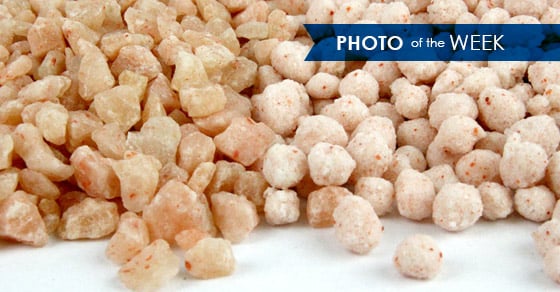This week’s photo highlights potash granules produced via compaction (left) and granules produced via pelletizing (right).
Potash compaction granulation and pelletization are two agglomeration methods, each offering a set of advantages and disadvantages.
Compaction granulation does not use a binder or drying during processing, a cost-effective endeavor. However, the coarse, jagged granule edges are prone to attrition, the breakdown of the edges into dusty fines.
The pelletized granules were produced via tumble growth agglomeration (aka. wet granulation), a process commonly carried out on a disc pelletizer. This process produces less fines and dust, in addition to faster nutrient delivery. A disadvantage is that binder is needed to achieve agglomeration, which can increase processing costs because a drying step is then also necessary.
FEECO has been working with potash since our founding in 1951. Since then, we’ve provided testing, process design and development, and equipment manufacturing for wet granulation, as well as drying and cooling. For more information on potash processing, contact us today!


